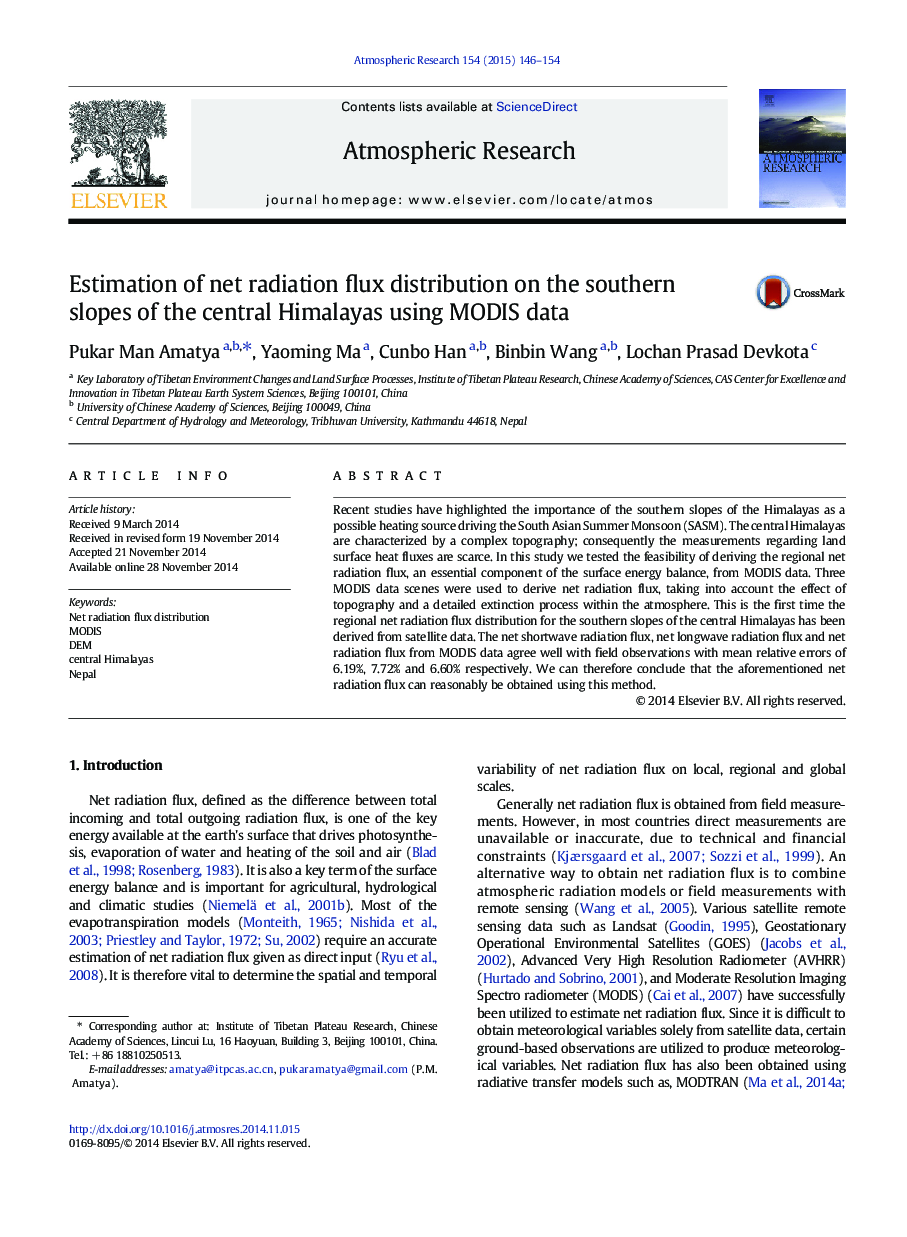| Article ID | Journal | Published Year | Pages | File Type |
|---|---|---|---|---|
| 4449854 | Atmospheric Research | 2015 | 9 Pages |
•First attempt at modeling regional distribution of net radiation in southern side of the central Himalayas.•Tested methodology proves efficient to model net radiation distribution with mean relative error 6.60%.•Developed a parameterization scheme for modeling net radiation flux independent of field measurements.
Recent studies have highlighted the importance of the southern slopes of the Himalayas as a possible heating source driving the South Asian Summer Monsoon (SASM). The central Himalayas are characterized by a complex topography; consequently the measurements regarding land surface heat fluxes are scarce. In this study we tested the feasibility of deriving the regional net radiation flux, an essential component of the surface energy balance, from MODIS data. Three MODIS data scenes were used to derive net radiation flux, taking into account the effect of topography and a detailed extinction process within the atmosphere. This is the first time the regional net radiation flux distribution for the southern slopes of the central Himalayas has been derived from satellite data. The net shortwave radiation flux, net longwave radiation flux and net radiation flux from MODIS data agree well with field observations with mean relative errors of 6.19%, 7.72% and 6.60% respectively. We can therefore conclude that the aforementioned net radiation flux can reasonably be obtained using this method.
